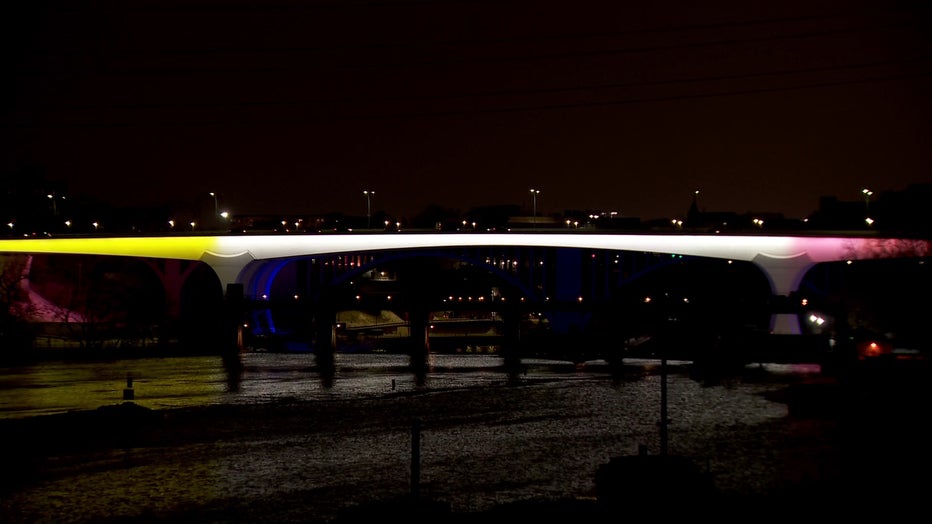How Baltimore Key Bridge collapse is influencing Minnesota's Blatnik Bridge plans

Blatnik bridge design reconsidered after Baltimore
Following a deadly bridge collapse in Baltimore, officials from the Minnesota Department of Transportation (MnDOT) say they are increasing safety within the design of the Blatnik Bridge to "further mitigate" the specific risk of it being stuck by a boat.
(FOX 9) - Officials from the Minnesota Department of Transportation (MnDOT) say they are increasing safety within the design of the Blatnik Bridge to "further mitigate" the specific risk of it being stuck by a boat after the deadly bridge collapse in Baltimore.
More than $1 billion in federal funding was awarded by the U.S. Department of Transportation to replace the aging John A. Blatnik Bridge earlier this year.
MnDOT also lit the 35W bridge with the colors of the Maryland state flag on Tuesday night as a gesture of support.

35W bridge lit up for Baltimore on March 26, 2024. (FOX 9)
State data show that there have been two impacts to bridges from water vessels in the past 20 years.
RELATED: Baltimore bridge collapse brings back painful memories of 35W disaster
One incident was in July 2009, when a barge struck the barrier of the southern pier of the Lexington Bridge. This damaged the barrier and caused debris to fall into the river, blocking about 20 feet of the navigation channel. The bridge itself was not damaged, and navigation lights were placed around the hazard.
A more recent incident was in 2018, when the new Winona bridge over the Mississippi was also struck by a barge and needed concrete repairs done.
Officials say MnDOT remains in close contact with Duluth Port Authority and the U.S. Coast Guard to evaluate risk and improve safety.
"In partnership with local and federal partners, we have comprehensive emergency plans should a bridge sustain a hit and require rescue operations," MnDOT said in a written statement. "For bridges over bodies of water in Minnesota, we put safety measures in place to both prevent any direct hit to the bridge and to mitigate any risk to the structure through our design should it sustain a collision."
There are 54 bridges in Minnesota that cross over navigable waters, which can be accessed by barges.
The Blatnik Bridge and the Richard I. Bong Bridge are the only two bridges in the state that cross over navigable waters that carry ocean-going vessels, MnDOT said.

